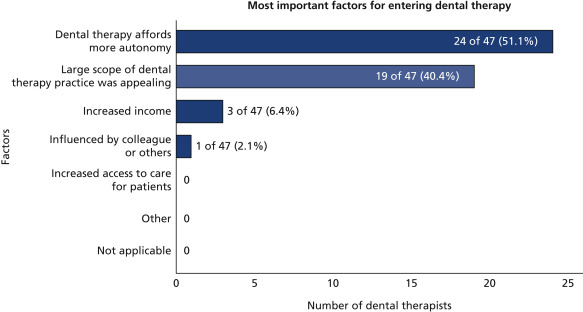Background
Expansion of the dental team may play a role in increasing access to oral health care.
In 2009, Minnesota became the first state to formally license dental therapists (DTs).
Methods
The authors surveyed DTs and advanced dental therapists (ADTs) in Minnesota to gain
a better understanding of those who enter the profession and their motivation for
doing so, as well as to solicit their opinions on the overall structure of dental
therapy education and the regulatory aspects of the profession.
Results
The response rate was 53.1%. DTs and ADTs were split on whether a dental hygiene degree
should be required. Primary reasons for entering dental therapy included more autonomy
and a larger scope of practice. Respondents expressed a desire for broadened prescribing
rights. The median annual income was in the $81,000 through $90,000 bracket.
Conclusions
Minnesota DTs and ADTs must practice in underserved communities. However, their ability
to expand access to oral health care is affected by their licensure requirement, scope
of practice, and prescription rights.
Practical Implications
Policy makers considering dental therapy legislation must consider educational requirements
and scope of practice when crafting state legislation. Broadening the scope of practice
may allow for more impactful care for at-risk communities.


